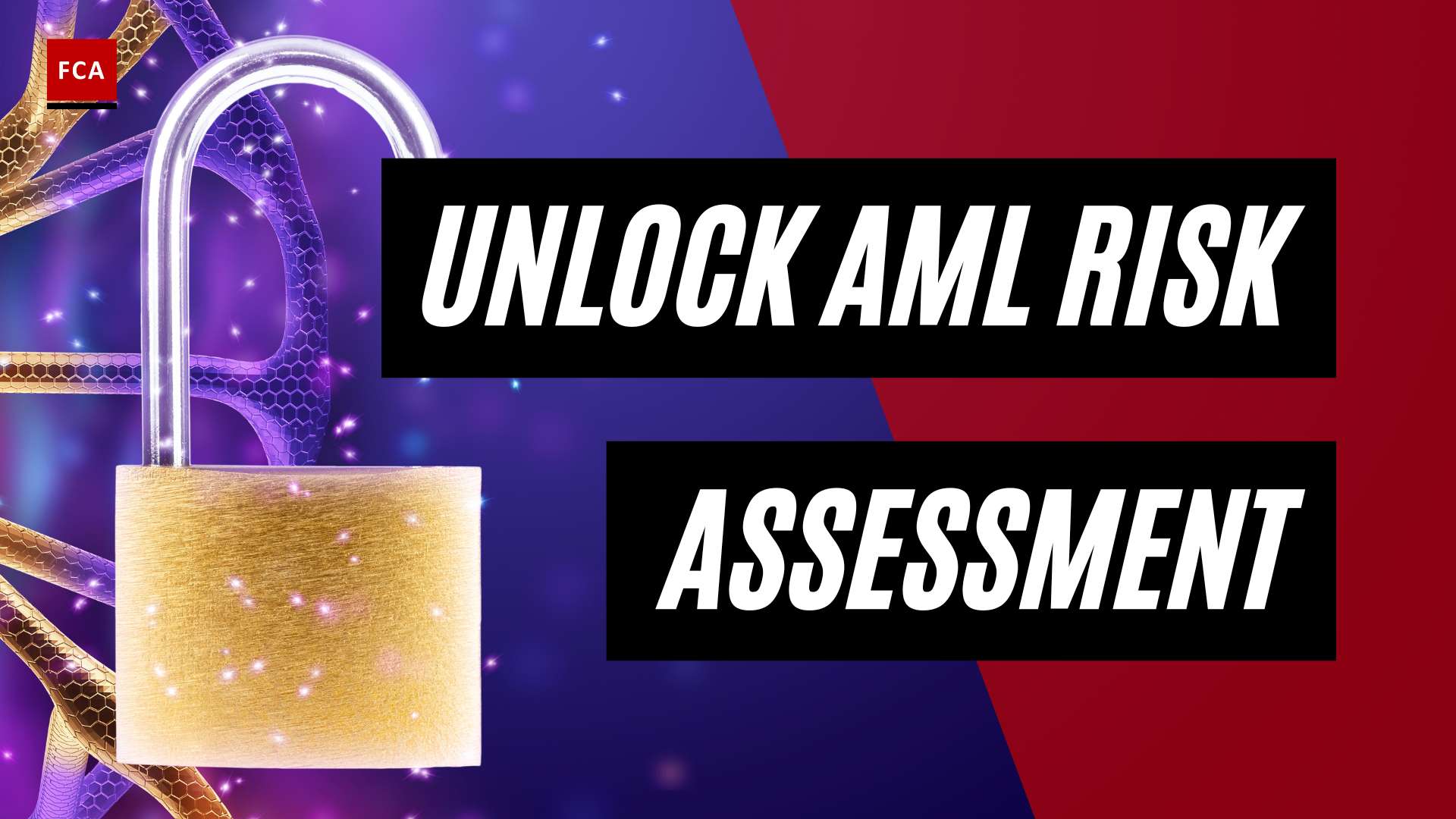Understanding Anti-Money Laundering Regulations
In the fight against money laundering and terrorist financing, governments and financial regulators have established robust anti-money laundering (AML) regulations. Understanding the importance of these regulations and the consequences of non-compliance is key for businesses and individuals alike.
The Importance of Anti-Money Laundering Regulations
Money laundering is the most common form of financial crime worldwide, and it is taken very seriously by the Federal Government and financial regulators. AML regulations play a crucial role in preventing and detecting illicit financial activities, protecting the integrity of the financial system, and safeguarding against the facilitation of criminal activities. By implementing effective AML practices, financial institutions and businesses can contribute to the global effort of combating money laundering and terrorist financing.
Violating AML regulations, even without malicious intent, can result in serious penalties and consequences. Financial organizations in violation can face civil and criminal penalties, ranging from fines to jail time. In extreme cases, financial institutions, countries, and individuals can be sanctioned, preventing them from doing business (source).
Consequences of Non-Compliance
Non-compliance with AML regulations can have severe implications for businesses. The consequences may include hefty fines, reputational damage, loss of customer trust, and legal repercussions. Financial institutions can face fines that can reach up to millions of dollars for violations of AML regulations. For example, under the Bank Secrecy Act (BSA) of 1970, financial institutions can face fines of up to $500,000, imprisonment for up to ten years, or both for violations (source). The USA PATRIOT Act requires all banks and financial institutions in the United States to understand their AML compliance obligations. Violations of this act can result in fines of $1 million or double the value of the transaction, whichever is greater (source). The Office of Foreign Assets Control (OFAC) enforces U.S. sanctions, and violations of AML sanctions can result in fines and penalties of up to $20 million and imprisonment for up to 30 years (source).
To avoid these consequences, businesses must establish robust AML compliance programs and adhere to the relevant regulations. It is essential to stay up to date with the evolving regulatory landscape and implement necessary measures to detect and prevent money laundering activities. By doing so, businesses can protect themselves from financial risks and demonstrate their commitment to maintaining a safe and secure financial environment.
By understanding the importance of AML regulations and the potential consequences of non-compliance, businesses can prioritize AML compliance efforts and contribute to the global fight against money laundering and terrorist financing.
Key Anti-Money Laundering Laws and Regulations
To combat the global issue of money laundering and terrorist financing, various laws and regulations have been enacted. These play a crucial role in preventing illicit financial activities and ensuring the integrity of the financial system. Here are some key anti-money laundering (AML) laws and regulations:
The Bank Secrecy Act (BSA)
The Bank Secrecy Act (BSA) of 1970 is one of the most significant U.S. laws in fighting and preventing money laundering. It requires financial institutions to establish robust AML programs and report certain transactions to the authorities. The BSA imposes stringent obligations on financial institutions to identify and report suspicious activities to the Financial Crimes Enforcement Network (FinCEN).
Violations of the BSA can result in severe penalties, including fines of up to $500,000, imprisonment for up to ten years, or both for non-compliance (source). Compliance with the BSA is essential for financial institutions to maintain the integrity of the financial system and deter money laundering.
The USA PATRIOT Act
Enacted in response to the 9/11 terrorist attacks, the USA PATRIOT Act requires all banks and financial institutions in the United States to understand and implement robust AML compliance obligations. It enhances the ability of law enforcement agencies to detect, investigate, and prevent money laundering and terrorist financing activities.
Financial institutions are required to establish comprehensive Customer Identification Programs (CIPs) to verify the identity of their customers. The USA PATRIOT Act also enables enhanced due diligence measures for high-risk customers and imposes various reporting obligations.
Violations of the USA PATRIOT Act can result in significant penalties, including fines of $1 million or double the value of the transaction, whichever is greater (source). Compliance with this act is crucial for financial institutions to contribute to national security efforts and combat financial crime.
Office of Foreign Assets Control (OFAC) Regulations
The Office of Foreign Assets Control (OFAC) is responsible for enforcing U.S. sanctions programs. These programs aim to combat money laundering, terrorist financing, and other illicit activities by restricting transactions with sanctioned individuals, entities, and countries.
Financial institutions must comply with OFAC regulations by screening their customers and transactions against OFAC’s list of specially designated nationals (SDNs) and blocked persons. Violations of OFAC sanctions can result in substantial fines and penalties, with fines reaching up to $20 million and imprisonment for up to 30 years (source).
Financial Transactions and Reports Analysis Center (FINTRAC) Regulations
In Canada, the Financial Transactions and Reports Analysis Center (FINTRAC) plays a vital role in combating money laundering and terrorist financing. FINTRAC assists law enforcement agencies by receiving, analyzing, and disclosing financial intelligence related to suspicious transactions.
Under the Proceeds of Crime (Money Laundering) and Terrorist Financing Act (PCMLTFA), reporting entities are required to fulfill obligations such as reporting financial transactions to FINTRAC, verifying clients’ identities, maintaining records, establishing compliance programs, and registering with FINTRAC.
Failure to comply with these obligations may result in administrative monetary penalties (AMPs) or criminal charges under the PCMLTFA. AMPs are monetary penalties imposed by FINTRAC for non-compliance with the PCMLTFA, and the amounts can vary depending on the severity of the violation (FINTRAC).
Understanding and adhering to these key AML laws and regulations is crucial for financial institutions and other businesses to combat money laundering, terrorist financing, and other illicit activities. Compliance not only helps protect the financial system but also ensures trust and transparency in financial transactions.
Enforcement and Penalties for Non-Compliance
When it comes to anti-money laundering regulations, compliance is of utmost importance. Non-compliance can have severe consequences for individuals and financial institutions. This section explores the enforcement measures and penalties associated with non-compliance.
Civil and Criminal Penalties
Violating anti-money laundering regulations, even without malicious intent, can result in serious penalties and consequences, including jail time. Financial organizations in violation of anti-money laundering (AML) regulations can face civil and criminal penalties, ranging from fines to imprisonment. The penalties vary depending on the jurisdiction and the specific laws violated.
For instance, in the United States, the Bank Secrecy Act (BSA) of 1970 is the most significant law in fighting and preventing money laundering. Financial institutions can face AML penalties such as fines of up to $500,000, imprisonment for up to ten years, or both for violations of the BSA. The USA PATRIOT Act requires all banks and financial institutions in the United States to understand their AML compliance obligations. Violations of this act can result in fines of $1 million or double the value of the transaction, whichever is greater. Additionally, the Office of Foreign Assets Control (OFAC) enforces U.S. sanctions, and violations of AML sanctions can result in fines and penalties of up to $20 million and imprisonment for up to 30 years.
Administrative Monetary Penalties (AMPs)
In Canada, the Financial Transactions and Reports Analysis Center (FINTRAC) enforces anti-money laundering regulations. Failure to comply with obligations outlined in the Proceeds of Crime (Money Laundering) and Terrorist Financing Act (PCMLTFA), such as reporting financial transactions to FINTRAC, verifying clients’ identity, keeping records, establishing a compliance program, and registering with FINTRAC, may result in an administrative monetary penalty (AMP). These penalties can range from thousands to millions of dollars, depending on the nature and severity of the non-compliance.
Criminal Charges and Punishment
Under the PCMLTFA in Canada, criminal charges and their associated punishments apply to persons or entities guilty of non-compliance offences. The specific charges and penalties are outlined in Part 5 of the Act. Criminal charges can lead to significant fines and imprisonment for individuals involved in money laundering activities.
Financial institutions and individuals alike should take AML compliance seriously to avoid the potential legal and financial repercussions of non-compliance. To stay informed about the latest regulations and avoid penalties, organizations can refer to resources such as FINRA, the Financial Crimes Enforcement Network (FinCEN), and utilize technology solutions specifically designed for AML compliance.
Understanding the enforcement measures and penalties associated with non-compliance underscores the importance of implementing robust AML compliance programs. By prioritizing compliance and staying vigilant in reporting suspicious activities, businesses can mitigate financial risks and maintain regulatory compliance with international standards.
Reporting Non-Compliance and Voluntary Disclosures
Compliance with anti-money laundering regulations is of utmost importance to financial institutions and other businesses. In cases of non-compliance, reporting entities have the responsibility to disclose any suspicious activity or suspected non-compliance. This section will explore two avenues for reporting non-compliance and making voluntary disclosures: Non-Compliance Disclosures (NCDs) and Voluntary Information Record (VIR) submission.
Non-Compliance Disclosures (NCDs)
In Canada, the Financial Transactions and Reports Analysis Centre (FINTRAC) plays a crucial role in combating money laundering and terrorist financing. FINTRAC assists law enforcement by providing non-compliance disclosures, which contain information relevant to criminal non-compliance investigations or prosecutions. These disclosures include examination details, money services businesses registration information, and financial transactions reported by reporting entities. The information provided in NCDs is not available elsewhere, making it a valuable resource for law enforcement agencies (FINTRAC).
Non-compliance information disclosed through NCDs can be used as evidence in court to establish whether a required transaction was reported by a reporting entity or if an offence was committed. This information aids in investigating or prosecuting non-compliance offences under the Proceeds of Crime (Money Laundering) and Terrorist Financing Act (PCMLTFA) (FINTRAC). Reporting entities should promptly disclose any non-compliance to ensure the effective enforcement of anti-money laundering regulations.
Voluntary Information Record (VIR) Submission
Reporting entities also have the option to make voluntary disclosures related to non-compliance with the PCMLTFA. To initiate a voluntary disclosure, reporting entities can request a Voluntary Information Record (VIR) form via email from FINTRAC. The VIR form requires details regarding the suspected non-compliance, the type of services offered, and information on financial transactions conducted. Once completed, the VIR form can be securely submitted through an email address provided by FINTRAC, which only responds to emails from appropriate police or government partner domain names (FINTRAC).
Voluntary disclosures through VIR submission allow reporting entities to come forward and provide relevant information about suspected non-compliance. This proactive approach demonstrates a commitment to maintaining a strong anti-money laundering program and can help mitigate potential penalties.
By reporting non-compliance and making voluntary disclosures, reporting entities contribute to the detection and prevention of money laundering and terrorist financing activities. These processes foster transparency, accountability, and adherence to anti-money laundering regulations. It is essential for businesses to understand their obligations and promptly report any instances of non-compliance to ensure the integrity of the financial system.
Tools and Resources for AML Compliance
To effectively navigate the complex landscape of anti-money laundering regulations, professionals in compliance, risk management, and anti-financial crime can rely on various tools and resources. These resources assist in understanding and implementing best practices to ensure compliance with AML requirements. Here are three essential tools and resources for AML compliance:
FINRA Resources
The Financial Industry Regulatory Authority (FINRA) offers a range of resources and tools for industry professionals. These resources are designed to facilitate compliance with AML regulations and help ensure adherence to industry standards. Some of the notable FINRA resources include:
- FINRA Gateway: This platform provides registered representatives and compliance professionals with access to Continuing Education requirements, industry Central Registration Depository (CRD) records, and other compliance-related tasks.
- DR Portal: The Dispute Resolution Portal allows arbitration and mediation participants, as well as FINRA neutrals, to view case information and submit documents related to compliance matters.
- FINRA Data: The FINRA Data platform offers non-commercial access to data, allowing users to save data views, create and manage a Bond Watchlist, and monitor compliance with AML regulations.
These resources provided by FINRA can greatly assist professionals in meeting their compliance obligations and staying up-to-date with the latest AML regulations.
Financial Crimes Enforcement Network (FinCEN)
The Financial Crimes Enforcement Network (FinCEN) plays a critical role in combating money laundering and other financial crimes in the United States. Established in 1970, FinCEN administers the Bank Secrecy Act (BSA) and works closely with regulatory agencies to enforce AML regulations (Sanction Scanner). Financial institutions can benefit from the following resources offered by FinCEN:
- BSA E-Filing System: This system allows financial institutions to electronically file required reports, such as Currency Transaction Reports (CTRs) and Suspicious Activity Reports (SARs), to comply with BSA reporting requirements.
- FinCEN Guidance: FinCEN provides guidance documents that offer interpretive guidance on AML regulations, including topics such as customer due diligence, beneficial ownership, and risk assessment. These resources help financial institutions establish and maintain effective AML compliance programs.
By leveraging the tools and guidance offered by FinCEN, financial institutions can enhance their AML compliance efforts and contribute to the overall integrity of the financial system.
Technology Solutions for AML Compliance
As AML regulations continue to evolve, financial institutions have increasingly turned to technology-driven solutions to ensure compliance. These solutions offer automation, advanced analytics, and real-time monitoring capabilities. Some of the technology solutions used for AML compliance include:
- Automated Know Your Customer (KYC) and Customer Due Diligence (CDD) tools: These tools streamline the identity verification process and enable financial institutions to perform thorough due diligence on customers, ensuring compliance with KYC and AML regulations.
- Artificial Intelligence (AI)-powered AML scanning solutions: AI technology enables financial institutions to scan and analyze large volumes of data for potential AML red flags and suspicious activities. These solutions help identify patterns and anomalies, improving the effectiveness of transaction monitoring.
- Transaction Monitoring Systems: These systems monitor customer transactions in real-time, allowing financial institutions to detect and investigate unusual or suspicious activities promptly. Transaction monitoring systems can help identify potential money laundering and terrorist financing activities.
By adopting technology solutions, financial institutions can enhance their AML compliance programs, reduce manual effort, and improve the efficiency and accuracy of their AML monitoring processes.
By utilizing the various tools and resources available, professionals can stay informed about AML regulations, implement effective compliance programs, and contribute to the prevention of money laundering and terrorist financing activities. It is crucial to regularly update knowledge and leverage these resources to ensure ongoing compliance with evolving AML requirements.
Evolution of Anti-Money Laundering Regulations
The fight against money laundering has evolved over time to keep pace with the changing landscape of financial crimes. Understanding the historical development of anti-money laundering (AML) regulations, the role of international organizations like the Financial Action Task Force (FATF), and the impact of technology on AML compliance is crucial for professionals working in compliance, risk management, and anti-financial crime.
Historical Development of AML Regulations
The journey to combat money laundering began in the early 1970s when the United States established the Financial Crimes Enforcement Network (FinCEN) and introduced the Bank Secrecy Act (BSA). The BSA aimed to detect and prevent money laundering by requiring financial institutions to report certain transactions and maintain records.
Over time, AML regulations have expanded globally. In 1989, the Financial Action Task Force (FATF) was established in Paris to counter money laundering and promote international AML standards. Initially focused on money laundering, FATF’s mission expanded after the 9/11 terrorist attacks in 2001 to include combating terrorist financing (Sanction Scanner).
In Europe, the European Union (EU) introduced its first Anti-Money Laundering Directive in 1990 to prevent the misuse of the financial system for money laundering. Since then, the EU has continually revised its AML directives to address emerging risks associated with illicit activities such as money laundering and terrorist financing.
The Role of Financial Action Task Force (FATF)
The FATF plays a crucial role in shaping AML regulations globally. It sets international standards and promotes the implementation of effective measures to combat money laundering, terrorist financing, and other related threats. The FATF’s recommendations serve as a guide for countries in developing their own AML frameworks, ensuring a consistent and coordinated approach worldwide.
Financial institutions and other organizations involved in financial transactions are encouraged to follow the FATF’s recommendations and incorporate them into their AML compliance programs. By aligning with these international standards, countries can enhance their ability to prevent and deter money laundering and terrorist financing activities.
Technology’s Impact on AML Compliance
As financial crimes have evolved, technology has become an integral part of AML compliance. Financial institutions and businesses are increasingly adopting technology-driven solutions to meet regulatory requirements and mitigate AML risks.
Automated Know Your Customer (KYC) and Customer Due Diligence (CDD) tools have revolutionized identity verification processes, enabling quick and accurate identification of customers. Artificial intelligence-powered AML scanning solutions aid in sanctions screening, enabling institutions to identify high-risk individuals and entities. Transaction Monitoring systems utilize real-time data analysis to detect suspicious activity and help prevent financial crimes.
By embracing technology solutions for AML compliance, organizations can streamline their processes, improve efficiency, and enhance their ability to identify and prevent money laundering and other financial crimes. These technological advancements contribute to the overall effectiveness of AML frameworks and support the fight against illicit activities.
As financial crimes continue to evolve, it is crucial for professionals in the field to stay updated with the latest AML regulations and advancements in technology. By leveraging technology-driven solutions and adhering to international standards, businesses can effectively combat money laundering and protect themselves from potential risks.
Recent Developments in AML Regulations
To keep up with the evolving landscape of financial crime, anti-money laundering (AML) regulations have undergone significant changes in recent years. This section focuses on two notable developments: the European Union’s AML Directives and the emergence of crypto regulations, including the Travel Rule.
The European Union’s AML Directives
The European Union (EU) has been at the forefront of shaping AML regulations to combat money laundering and terrorist financing. The EU introduced its first AML Directive in 1990, and since then, these directives have been continuously revised to mitigate the risks associated with illicit activities like money laundering and terrorist financing (Sanction Scanner).
The EU’s AML Directives aim to establish common standards and practices across member states, fostering a coordinated approach to combat financial crime. These directives outline obligations for various entities, including financial institutions, virtual asset service providers, and designated non-financial businesses and professions. The directives cover areas such as customer due diligence, risk assessment, beneficial ownership transparency, and reporting suspicious transactions.
By implementing these directives, the EU seeks to enhance transparency, strengthen the integrity of the financial system, and improve cooperation among member states in the fight against money laundering and terrorist financing.
Crypto Regulations and the Travel Rule
The emergence of cryptocurrencies has presented new challenges in the realm of AML compliance. Recognizing the potential risks associated with virtual assets, the Financial Action Task Force (FATF), an intergovernmental organization, issued guidance in 2019 to regulate virtual asset service providers (VASPs) and address potential money laundering risks in the crypto sector.
One significant aspect of these regulations is the Travel Rule. The Travel Rule requires VASPs to share certain customer information when conducting crypto transactions exceeding a certain threshold. This information includes the originator’s and beneficiary’s names, addresses, and account numbers, similar to the information shared in traditional wire transfers. The aim is to enhance transparency and traceability in crypto transactions, reducing the potential for money laundering and terrorist financing.
Regulators around the world have been working to implement these regulations to ensure that the benefits of cryptocurrencies are not exploited for illicit purposes. Compliance with crypto-specific AML regulations is crucial for businesses operating in the crypto space, such as cryptocurrency exchanges and wallet providers.
By addressing the challenges posed by cryptocurrencies and introducing measures like the Travel Rule, regulators are taking steps to bridge the gap between traditional financial systems and the crypto world, creating a more robust AML framework.
As AML regulations continue to evolve, it is essential for businesses and financial institutions to stay abreast of these developments and adapt their compliance programs accordingly. A proactive approach to AML compliance, including thorough risk assessments, enhanced due diligence, and robust monitoring systems, is crucial for mitigating the risks of money laundering and terrorist financing in an ever-changing financial landscape.
Importance of AML Compliance for Businesses
Ensuring compliance with anti-money laundering (AML) regulations is of paramount importance for businesses operating in the financial sector. Failing to adhere to these regulations can result in significant financial risks and consequences. Implementing robust AML compliance programs is vital for businesses to mitigate these risks and maintain regulatory compliance.
Financial Risks and Consequences
Non-compliance with AML regulations can expose businesses to severe financial risks. Regulatory authorities have the power to impose substantial fines and penalties on institutions that fail to meet their AML obligations. For example, the U.S. Treasury’s Office of Foreign Assets Control (OFAC) issued approximately $7 billion in fines from 2008 to 2017 to financial institutions that violated AML regulations (KYC Hub). These fines can significantly impact a business’s financial health and reputation.
In addition to monetary penalties, non-compliance can lead to reputational damage. Instances of money laundering or other financial crimes within a business can erode trust among clients and stakeholders. Rebuilding a tarnished reputation can be a challenging and time-consuming process. Furthermore, non-compliance can result in the loss of business relationships, partnerships, and access to international markets.
Implementing robust AML compliance programs is crucial for businesses to mitigate these financial risks. By establishing effective AML controls and systems, businesses can demonstrate their commitment to preventing money laundering and terrorist financing. This, in turn, helps to safeguard the financial integrity of the institution and protect its reputation.
Implementing Robust AML Compliance Programs
To ensure effective AML compliance, businesses should implement comprehensive programs tailored to their specific operations and regulatory requirements. These programs typically include the following components:
-
Risk Assessment: Conducting thorough risk assessments to identify and evaluate potential money laundering and terrorist financing risks specific to the business. This involves assessing customer profiles, transaction types, geographic locations, and other relevant factors.
-
Policies and Procedures: Developing and implementing robust policies and procedures that outline the steps to be taken to prevent, detect, and report suspicious activities. These policies should align with applicable AML laws and regulations.
-
Employee Training: Providing regular and comprehensive training to employees to enhance their understanding of AML regulations, the identification of suspicious activities, and the reporting procedures.
-
Customer Due Diligence (CDD): Implementing effective customer due diligence measures to verify the identities of customers and assess the potential risks associated with their activities. This includes performing Know Your Customer (KYC) checks and ongoing monitoring of customer transactions.
-
Transaction Monitoring: Employing sophisticated monitoring systems and tools to detect unusual or suspicious transactions that may indicate potential money laundering or terrorist financing activities. Regularly reviewing and analyzing transaction data is essential for effective detection.
-
Reporting and Record-Keeping: Establishing robust processes for reporting suspicious activities to appropriate regulatory authorities and maintaining accurate records of all AML-related activities and transactions.
By implementing these measures and staying up to date with evolving AML regulations, businesses can effectively mitigate financial risks associated with money laundering activities. It is also essential to adopt technology-driven solutions, such as automated KYC and CDD tools, artificial intelligence-powered AML scanning solutions, and transaction monitoring systems (Sanction Scanner). These solutions streamline compliance processes, enhance efficiency, and minimize the risks of financial crimes.
In conclusion, businesses must prioritize AML compliance to protect their financial interests, maintain their reputation, and meet regulatory obligations. By implementing robust AML compliance programs and staying proactive in adopting technological advancements, businesses can navigate the complex landscape of AML regulations with confidence.








